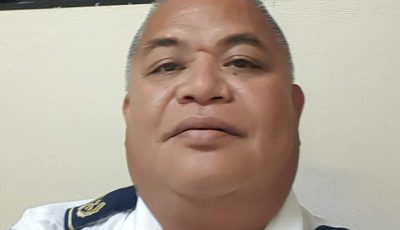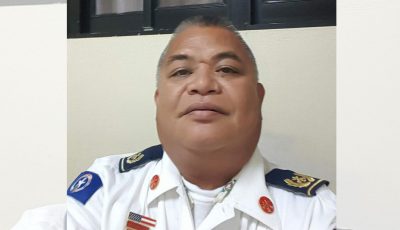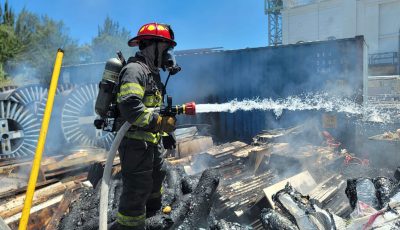Saipan firefighters demonstrate ‘live burns’ at aircraft
The Commonwealth Ports Authority’s Aircraft Rescue and Fire Fighting Division and Department of Fire and Emergency Medical Services demonstrated yesterday how to approach and extinguish three aircraft fire scenarios at the Pacific Region ARFF Training Center at the Francisco C. Ada/Saipan International Airport.
The demonstration was done before participants of the 5th Annual Western Pacific Islands Association of Fire Chiefs Training Forum. The three-day training kicked off on Wednesday at the Fiesta Resort & Spa’s Hibiscus Hall.
WPIAFC president Stanley Torres Jr. explained the scenarios to the participants who are fire chiefs, fire officials, and their staff from the CNMI, Guam, Palau, Federated States of Micronesia, and the Republic of Marshall Islands.
U.S. Fire Administrator-Chief Ernest Mitchell Jr., who was the keynote speaker at WPIAFC forum, was present at the demonstration.
CPA and DFEMS firefighters, wearing proximity suits, showed their capabilities in extinguishing huge fires at the Specialized Aircraft Fire Trainer. Each of three “live burns” at SAFT costs $3,000 as jet fuel was actually used.
CPA ARFF chief James Diaz said the demonstration’s concept is to enhance the proficiency of firefighters to perform their duties in actual aircraft fire incidents and to ensure their safety when they approach the aircraft.
“At the end of the day, it’s saving lives and safety for all,” Diaz said.
With the demonstration, Diaz said they want to capture realistic scenes as much as possible from an actual incident or in training-based scenarios.
With the help of the Federal Aviation Administration, the SAFT facility has been upgraded, Diaz said.
“Lot of vision from FAA and in our part in terms of aviation safety throughout the region,” Diaz said, referring to improvement at the training center.
Andersen Air Force Base instructors joined local firefighters during the demonstration.
“This is in partnership within the region in terms of training,” Diaz said.
In the landing gear fire scenario, an aircraft lands so hard that a fire occurs.
In the three-dimension scenario, jet fuel is spilling to the ground from over 10 to 20 feet high and burning occurs in all areas.
The third scenario, Diaz said, was if fire occurs at the aircraft’s engine and wings.
“In essence it’s how they approach the fire and how they use the hose in extinguishing the fire in order for them to control it,” Diaz said.
Yap ARFF chief Dominic Brug said the training is extensive, but that he gets used to it because they do this kind of demonstration every year.
Brug said they are also doing the same training back in Yap.



























